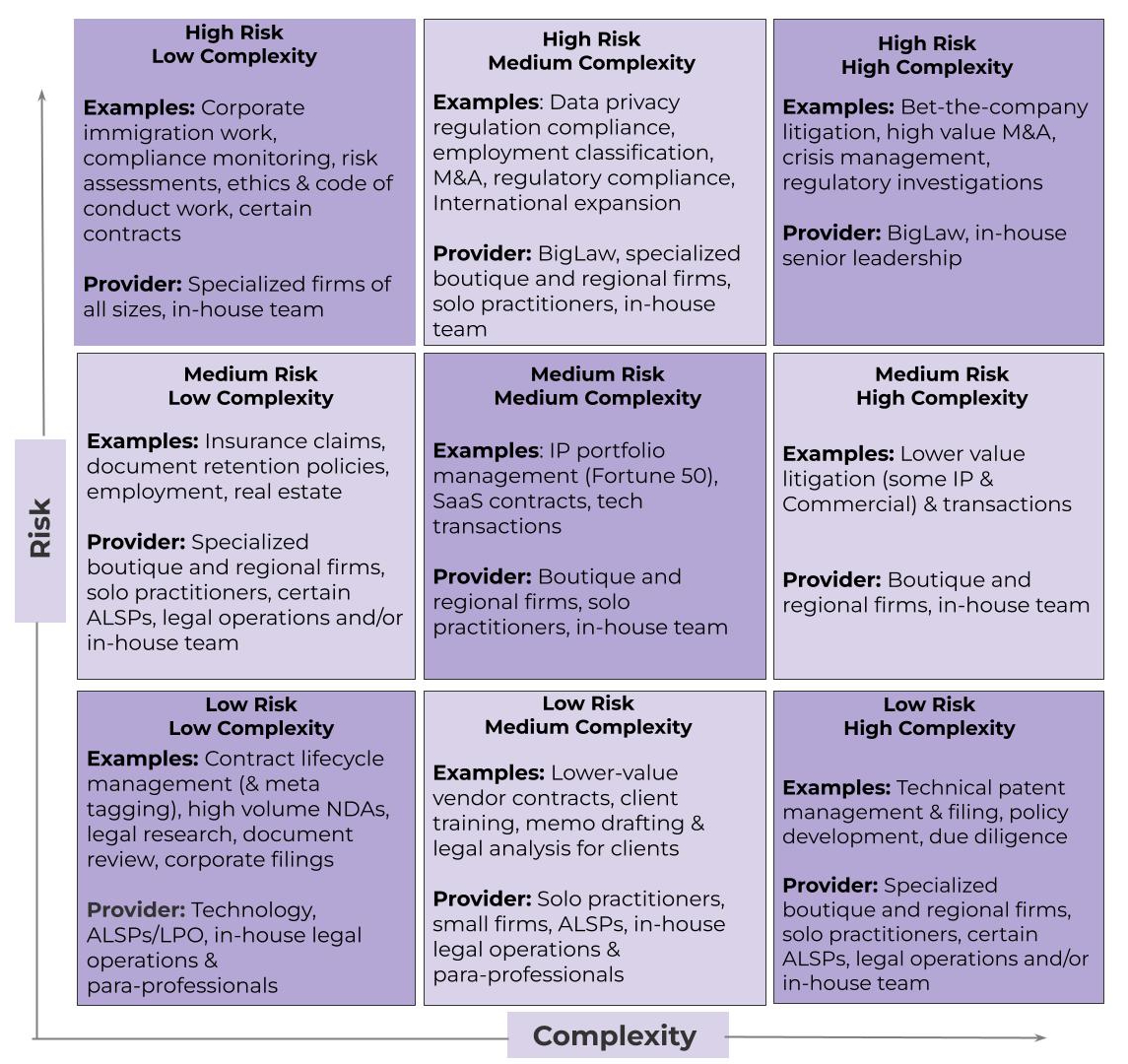
Why companies are using boutique and midsize firms to achieve business goals
Updated 9/10/2024
From our work with in-house legal departments across companies of all sizes, we know that “right-sourcing” outside counsel work and taking advantage of flexible legal talent is one of the top priorities. Factors like the expansion of legal service provider options, market conditions and economic uncertainty and an increasing focus on legal operations are creating an environment where legal departments can work more flexibly and strategically to drive value for the business.
“I’m always trying to understand where we’re spending our dollars, how we’re spending them and how to spend them most effectively by embracing better processes, better technology and better legal services,” says Carol Hopperton, Legal Chief of Staff at Vonage. “I try to run legal like it’s my business.”
In our experience as a legal marketplace that connects legal departments with flexible legal talent–from solo practitioners to midsize firms to ALSPs, we find that the most successful legal teams regularly assess their work to determine where to send projects to get the most value from providers. As a result of more legal departments performing these assessments, a significant trend we’ve seen is companies utilizing boutique and midsize firms for work that traditionally may have been sent to large law firms. Here, we take a look at the factors these companies weigh when they make a decision to move work to different providers, and why they’re doing it.
Assessing Legal Provider Value
The most successful legal departments regularly look at legal spend in a structured way. Whether it’s quarterly, annually or on whatever cadence makes sense for your company, reviewing legal work that’s being done within your organization and externally is the starting point for making sourcing decisions that drive value for the business.
The specifics of how you structure this discussion will differ from industry to industry and company to company. However, from a high level, some of the questions you want to think about when creating a process include:
-
Where is the company’s legal spend going? What are the business units that are spending the most on outside counsel and what are they spending it on?
-
What is the business need and how is the legal spend supporting it?
-
What level of risk is the work? If it’s low or medium, does it need to go to a large law firm or can it be shifted to in-house or lower-cost providers?
-
What kind of work is done internally, by outside counsel or outsourced to alternative legal services providers (ALSPs) and other options? What percentage of work going to large firms is being billed to paralegals, associates and partners?
-
How do external providers fit into business operations? Are there ongoing challenges with billing, responsiveness, communication, etc.?
When thinking about shifting work to get the most value out of your legal spend, we’ve found it’s helpful to organize the types of work by their risk and complexity. As an example, take a look at the matrix below, which categorizes legal work by these two factors and the providers that are best suited for that level of work.

Why Companies Right Source with Flexible Legal Talent
Companies are moving their low or medium risk and complexity work to flexible legal talent options, including midsize, regional and boutique firms, because they offer benefits that increase the value of legal services. There are several reasons why this is the case.
-
Cost Savings & Efficiency – This is one of the clearest benefits companies see when using midsize firms over large law firms. Not only are rates more reasonable, but midsize firms are often more agile, responding quickly and tailoring communication and advice to your business needs. When you’re making a case for legal as a value driver, saving costs while achieving the same results is an easy win.
-
Higher Level of Service – For a large law firm, your company is just one of many clients. With a smaller firm, you have the opportunity to be a flagship client that provides immense value to the firm. Your volume of work could be critical to the firm’s bottom line and they will work to ensure you have a great experience as a client.
-
Access Valuable Expertise – Building on the above, another key benefit boutique and midsize firms provide is specialization in particular areas of law. For example, you may be using a large law firm to help with patent work, when a smaller firm that focuses on patents could provide the same (or better) service more efficiently and at a lower cost. Analyzing your needs and right sourcing for specific work pays dividends down the road, and helps tell your value story to the C-suite.
-
Achieve Diversity Goals – Moving the needle on diversity in the legal industry is on the minds of many corporate legal departments, and moving work to midsize firms is one way companies can send more work to attorneys from traditionally underrepresented communities.
If you would like to see what right-sourcing your legal work looks like in action, contact us at info@priorilegal.com for a complimentary work assessment analysis.